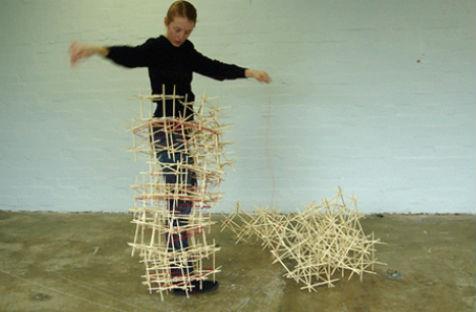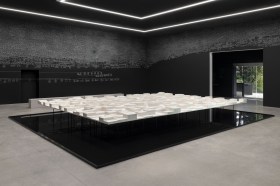The Australia China Art Foundation recently hosted an exhibition of Australia art in Chengdu, drawing interest from locals and the many international visitors to Chengdu who were attending the Fortune Magazine’s World Conference in the city.
In the burgeoning cultural dialogue with China the attention of western partners has rested on those centres it knows best: Beijing, the capital, Shanghai, the former cultural capital and now Hong Kong. Other large provincial capitals such as Chengdu (Sichuan), Wuhan (Hubei) or Xian (Shaanxi) hardly get a look in in spite of their flourishing art communities and bustling cities, the inhabitants of which number far in excess the entire populations of some western countries.
The initiative of the Australia China Art Foundation (ACAF) in deciding to support and exhibit the work of five Australian women artists along with artists from the Chengdu-based North Village Independent Workshop in the group exhibition ‘1/2 SCENE“ at Shichuan’s capital’s XLY MoMA is to be applauded.
Famous for its spicy and rich cuisine Sichuan has more recently has hit world news because of the casualties, urban and natural destruction of the severe earthquake of 2008. A significant aftereffect of this was the significant reduction of its already threatened population of pandas as many of their natural habitats had been destroyed. In different ways the work by the Australian artists in this exhibition amplifies our precarious position at the edge of nature as well as ecological concern.
The documentary film Then the Wind Changed by Melbourne based artist Celeste Geer examines the effects of natural disaster in her native Victoria when, in February 2007, a number of bush fires coalesced to create a furious storm that devastated the whole state. Her film tells the story of her family and that of her neighbours as they struggled to rebuild their homes and lives.
Janet Lawrence in well known for her series of Hospitals for Sick Plants but in Chengdu, as part of her larger project After Eden, she worked at the Chengdu Panda Base where she secretly filmed the animals not only to show how their lives had been disrupted by the effects of the earthquake but also the efforts being made to secure their survival. In her resulting video installation the figures of these animals are printed as negatives so that they almost seem like ghosts.
Leela Schauble’s objects have an even more apocalyptic tenor. Her primary material is plastic, shown here in photographs of new forms of life, floating in a primordial evolutionary soup. Because of its inorganic indestructability, she imagines this material as an unnatural successor to humankind once it has become extinct. Bridging research in science and art, Lisa Roet also riffs on the idea of evolution in series of sculptures in which different images of the heads or body parts of primates serve as metaphors for broader ecological issues relating to changing attitudes towards genetics, ethics and religion.
Focusing on the threatened subjectivity of both artist and observer, Melanie Irwin uses sculpture, drawing, performance and photography to address ‘the complexities of relations between urban bodies, objects and structures’ by contrasting the fragility of her body, and the mind that empowers it , with the geometric forms of an alienated post-industrial environment, She moves like a cyborg, constrained and clad in geometric filigree, as she laboriously negotiates the spaces of the gallery, weaving a web of red thread across her body as mute objects are also incorporated into the struggle.
These five artists have presented a strong but tough show that addresses fundamental, long-term problems that, in one form or another, we all have to face. Solutions to such problems are not in the realm of art except that, if they are to be found, energy and resources must be focused on the preservation rather than destruction of life. A respect for life in its many different forms is an abiding memory of this exhibition.
1/2 SCENE was held at Xu Liao Yuan Museum of Modern Art in Chengdu between June 8th and July 8th.




